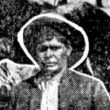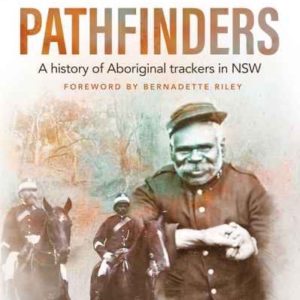Loading map...

Joseph Murray, son of George Murray of Gundabooka, was born at Bourke in about 1890. A talented horseman who stood over six feet tall, he was recruited by the police to work at the Redfern police stables soon after the end of WWI. The police relied on Murray to break in many of their new horses. Murray treated horses with kindness and only rode them occasionally.
Soon after arriving in Sydney, Murray married Mary Lewis of Lake Macquarie at Balmain in January 1920. He helped raise Mary’s children from a previous marriage and they regarded him as their father.
Murray sometimes put his tracking skills to good use in the Sydney bush. He played a leading role in the search for orchardist John Joseph Shakeshaft, who went missing from his home at Spencer on the northern bank of the Hawkesbury River near the junction with Mangrove Creek on 23 October 1921. It was thought that Shakecraft had gotten lost in rough and mountainous country near Marra Marra Creek where his brother owned an orchard. Fears were held for his safety as Shakeshaft had a history of poor eye-sight. Murray picked up the tracks on the southern side of the river and followed them for eight miles through thick scrub towards Marra Marra Creek. No sign was found and as hopes faded, it was thought his body would be found in a ravine. Unexpectedly, Shakecraft turned up at home “none the worse for his experiences”. He was unable to account for all the time he was missing, stating that he had no memory of his travels. Murray returned to Redfern and continued with his equine duties.
Murray returned to Bourke in later life with his family, finding work with the Main Roads Department. Sadly, he was murdered in a domestic dispute by a relative in August 1953. His family marked the anniversary of his death with a notice in the Bourke Herald for over ten years, demonstrating the high regard in which Murray was held by those close to him.

 This website explores the history of Aboriginal trackers in NSW from 1862 when the current NSW Police Force was established through to 1973 when the last tracker, Norman Walford, retired. You can read about the lives of individual trackers and some of the incredible tracking feats they...
This website explores the history of Aboriginal trackers in NSW from 1862 when the current NSW Police Force was established through to 1973 when the last tracker, Norman Walford, retired. You can read about the lives of individual trackers and some of the incredible tracking feats they...

There were over 200 NSW police stations that employed Aboriginal trackers between 1862 and 1973. Many were concentrated in the central-west and north-west of the state, the agricultural and pastoral heartland of NSW. This is because one of the main jobs of trackers was to pursue sheep, cattle and horse thieves. Trackers sometimes lived in small huts out the back...
Learn More ►
Pathfinders book Pathfinders, A history of Aboriginal trackers in NSW, written by Dr Michael Bennett and published by NewSouth, is now available from all good bookstores. Click on the link below to order your copy. https://www.abbeys.com.au/book/pathfinders-a-history-of-aboriginal-trackers-in-nsw.do Early History Since the beginning of the colony, government agencies, explorers, surveyors and members of the general public called upon the tracking...
Learn More ►